
Concept explainers
(a)
Interpretation:
Structure of
Concept Introduction:
Amides are synthesized using amidification reaction. This involves a reaction between
(a)
Answer to Problem 17.134EP
Carboxylic acid that is required was,

Explanation of Solution
Given structure of compound is,
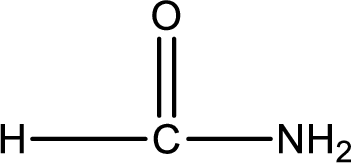
As the nitrogen atom present in the above amide has two hydrogen atoms bonded to it, the amide is a primary amide. Primary amide is produced by the reaction of ammonia with carboxylic acid. The “parent” carboxylic acid can be identified as shown below,
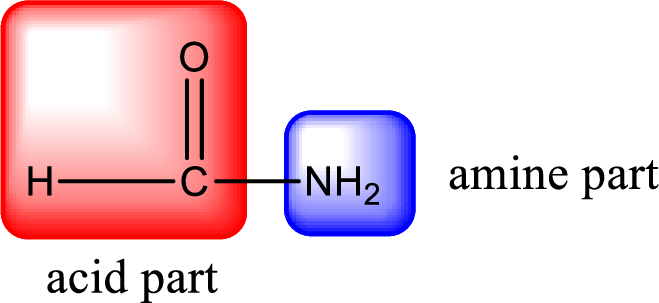
Hydrogen atom has to be added to the amine part and

Structure of carboxylic acid that is required to produce the given compound is drawn.
(b)
Interpretation:
Structure of carboxylic acid that is required to produce the given compound as product through amidification has to be given.
Concept Introduction:
Amides are synthesized using amidification reaction. This involves a reaction between amine and carboxylic acid. In this reaction, the
(b)
Answer to Problem 17.134EP
Carboxylic acid that is required was,
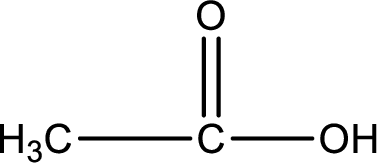
Explanation of Solution
Given structure of compound is,

As the nitrogen atom present in the above amide has two hydrogen atoms bonded to it, the amide is a primary amide. Primary amide is produced by the reaction of ammonia with carboxylic acid. The “parent” carboxylic acid can be identified as shown below,
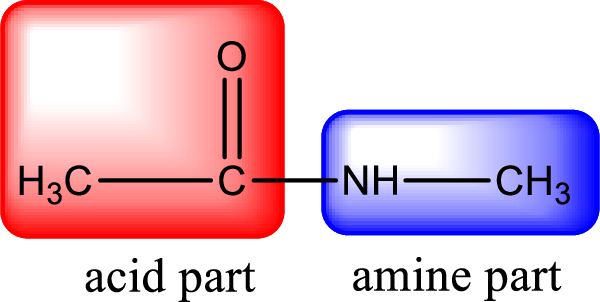
Hydrogen atom has to be added to the amine part and
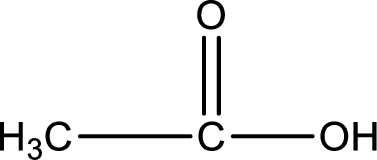
Structure of carboxylic acid that is required to produce the given compound is drawn.
(c)
Interpretation:
Structure of carboxylic acid that is required to produce the given compound as product through amidification has to be given.
Concept Introduction:
Amides are synthesized using amidification reaction. This involves a reaction between amine and carboxylic acid. In this reaction, the
(c)
Answer to Problem 17.134EP
Carboxylic acid that is required was,

Explanation of Solution
Given structure of compound is,

As the nitrogen atom present in the above amide has two hydrogen atoms bonded to it, the amide is a primary amide. Primary amide is produced by the reaction of ammonia with carboxylic acid. The “parent” carboxylic acid can be identified as shown below,
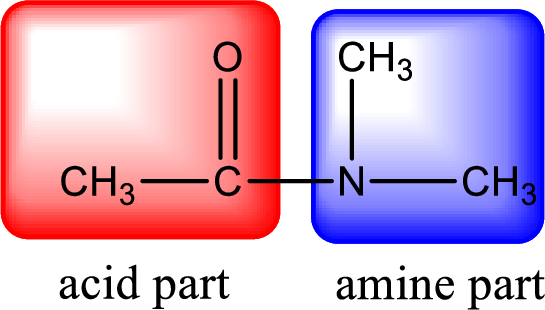
Hydrogen atom has to be added to the amine part and
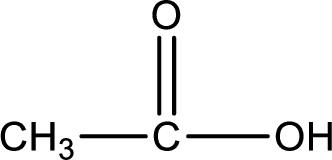
Structure of carboxylic acid that is required to produce the given compound is drawn.
(d)
Interpretation:
Structure of carboxylic acid that is required to produce the given compound as product through amidification has to be given.
Concept Introduction:
Amides are synthesized using amidification reaction. This involves a reaction between amine and carboxylic acid. In this reaction, the
(d)
Answer to Problem 17.134EP
Carboxylic acid that is required was,

Explanation of Solution
Given structure of compound is,

As the nitrogen atom present in the above amide has two hydrogen atoms bonded to it, the amide is a primary amide. Primary amide is produced by the reaction of ammonia with carboxylic acid. The “parent” carboxylic acid can be identified as shown below,
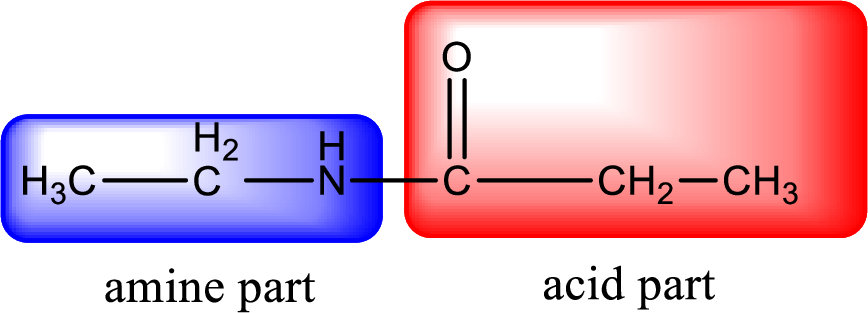
Hydrogen atom has to be added to the amine part and

Structure of carboxylic acid that is required to produce the given compound is drawn.
Want to see more full solutions like this?
Chapter 17 Solutions
EBK GENERAL, ORGANIC, AND BIOLOGICAL CH
- what are the possible stereoisomers for an aldotetrose?arrow_forwardWhich of the following is the correct systematic name of the disaccharide shown? OH он но но но- OH Он a-D-glucopyranosyl-(1-3)-B-D-galactopyranose O a-D-glucopyranosyl-(1–3)-B-D-glucopyranose O a-D-gulopyranosyl-(1-4)-B-D-glucopyranose O a-D-gulopyranosyl-(1-4)-B-D-galactopyranosearrow_forwardDraw the structures of the following compounds. (Includes both new and old names.) 3-cyclopentylhexan-3-olarrow_forward
- Given the structure of disaccharide below: (a) is it reducing or non-reducing?(b) will it react positively with Benedict's reagent and (c) what specific name of glycosidic linkage of the disaccharide is given?arrow_forwardDraw a Fischer projection formula for the enantiomer of each of the following monosaccharides. (a to d)arrow_forwardWhat is the carbohydrate classification for the product produced when each of the following undergoes complete hydrolysis?arrow_forward
- Following are Fischer projections for a groupof five-carbon sugars, all of which are aldopentoses. Identify thepairs that are enantiomers and the pairs that are epimers. (Thesugars shown here are not all of the possible five-carbon sugars.)arrow_forwardGlutathione is a commonly occurring tripeptide; it has considerable physiological importance because it is a scavenger for oxidizing agents. gamma-glutamyl-L-cysteinylglycine. Draw the structure of Glutathione and explain why the systematic name of Glutathione is such.arrow_forwardwrite the structure of the following disaccharides ex: Beta- D- Galactopyranosyl- alpha-D-glucosearrow_forward
- Give one specific sample structure (Fischer Projection or Haworth) of the following carbohydrate derivatives: - Alditols - Deoxy-sugararrow_forwardDraw the structures of the following acids:(a) 2-Ethyl-3-hydroxyhexanoic acid (b) m-Nitrobenzoic acidarrow_forwardIf Taxol (see Problem ) has a specific rotation of -49°, then what is the specific rotation of its enantiomer?arrow_forward
 Human Anatomy & Physiology (11th Edition)BiologyISBN:9780134580999Author:Elaine N. Marieb, Katja N. HoehnPublisher:PEARSON
Human Anatomy & Physiology (11th Edition)BiologyISBN:9780134580999Author:Elaine N. Marieb, Katja N. HoehnPublisher:PEARSON Biology 2eBiologyISBN:9781947172517Author:Matthew Douglas, Jung Choi, Mary Ann ClarkPublisher:OpenStax
Biology 2eBiologyISBN:9781947172517Author:Matthew Douglas, Jung Choi, Mary Ann ClarkPublisher:OpenStax Anatomy & PhysiologyBiologyISBN:9781259398629Author:McKinley, Michael P., O'loughlin, Valerie Dean, Bidle, Theresa StouterPublisher:Mcgraw Hill Education,
Anatomy & PhysiologyBiologyISBN:9781259398629Author:McKinley, Michael P., O'loughlin, Valerie Dean, Bidle, Theresa StouterPublisher:Mcgraw Hill Education, Molecular Biology of the Cell (Sixth Edition)BiologyISBN:9780815344322Author:Bruce Alberts, Alexander D. Johnson, Julian Lewis, David Morgan, Martin Raff, Keith Roberts, Peter WalterPublisher:W. W. Norton & Company
Molecular Biology of the Cell (Sixth Edition)BiologyISBN:9780815344322Author:Bruce Alberts, Alexander D. Johnson, Julian Lewis, David Morgan, Martin Raff, Keith Roberts, Peter WalterPublisher:W. W. Norton & Company Laboratory Manual For Human Anatomy & PhysiologyBiologyISBN:9781260159363Author:Martin, Terry R., Prentice-craver, CynthiaPublisher:McGraw-Hill Publishing Co.
Laboratory Manual For Human Anatomy & PhysiologyBiologyISBN:9781260159363Author:Martin, Terry R., Prentice-craver, CynthiaPublisher:McGraw-Hill Publishing Co. Inquiry Into Life (16th Edition)BiologyISBN:9781260231700Author:Sylvia S. Mader, Michael WindelspechtPublisher:McGraw Hill Education
Inquiry Into Life (16th Edition)BiologyISBN:9781260231700Author:Sylvia S. Mader, Michael WindelspechtPublisher:McGraw Hill Education





